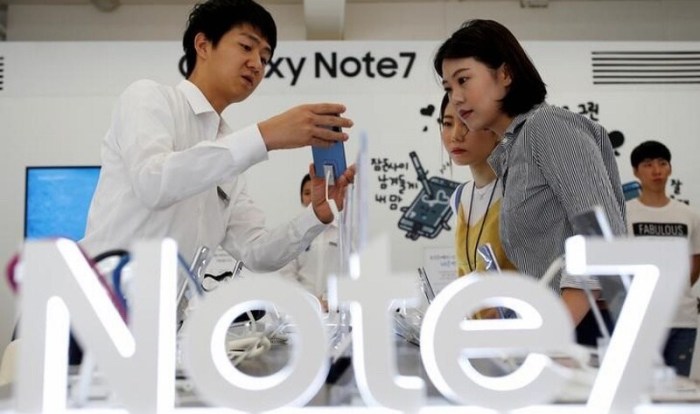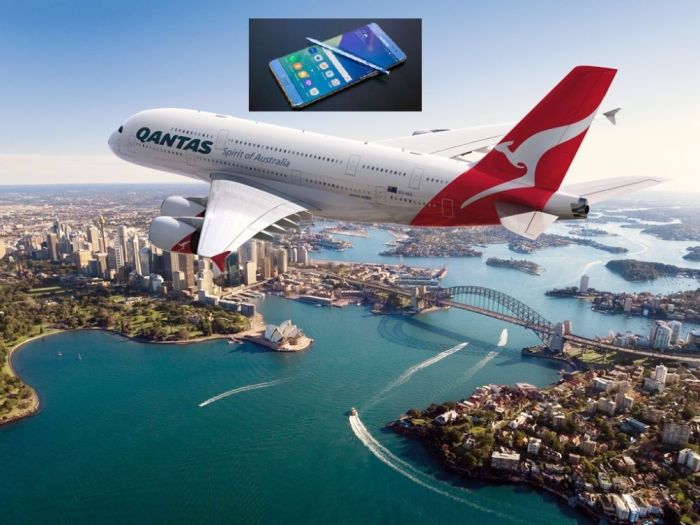The Galaxy Note 7 Recall
The Galaxy Note 7, Samsung’s flagship smartphone released in August 2016, was met with initial fanfare. However, its triumphant launch quickly turned into a PR nightmare when reports of overheating batteries and even explosions began surfacing. This led to a global recall of the device, one of the most significant in smartphone history.
Safety Concerns and Investigation
The primary concern with the Galaxy Note 7 was its battery. Reports of devices catching fire or exploding while charging or in use began to emerge just weeks after its release. Samsung initially attributed the issue to a faulty battery manufacturing process, but further investigations revealed a more complex problem. The company eventually acknowledged that the battery design itself was flawed, with the positive and negative electrodes coming into contact, causing overheating and potentially leading to fires.
The Galaxy Note 7 recall had a devastating impact on Samsung’s reputation and market share. The company faced significant financial losses due to the cost of the recall and the loss of sales. The recall also tarnished Samsung’s image, with consumers questioning the quality and safety of its products.
The Aftermath of the Recall
Samsung implemented strict quality control measures and redesigned the Note 7 battery. The company also launched a massive marketing campaign to regain consumer trust. However, the damage was already done. The Note 7 recall became a cautionary tale for other tech companies, highlighting the importance of thorough testing and quality control before releasing new products.
Australian Airlines’ Response
The Galaxy Note 7 recall sent shockwaves through the aviation industry, prompting swift action from airlines around the world. Australian airlines were no exception, implementing a ban on the device on flights due to safety concerns.
Reasons Behind the Ban
The primary reason for the ban was the potential fire hazard posed by the Galaxy Note 7. The device’s battery was prone to overheating and catching fire, leading to multiple incidents, including on flights. Airlines were concerned about the safety of passengers and crew, as well as the potential damage to aircraft. The ban was a precautionary measure to mitigate these risks.
Safety Protocols and Procedures
Australian airlines implemented a range of safety protocols and procedures to enforce the ban on the Galaxy Note 7. These included:
* Announcing the ban: Airlines communicated the ban to passengers through various channels, including their websites, social media, and in-flight announcements.
* Checking baggage: Passengers were required to declare their Galaxy Note 7 devices during baggage check-in. Airlines also implemented measures to screen luggage for the device.
* Boarding procedures: Airlines implemented procedures to ensure that passengers did not carry Galaxy Note 7 devices onto flights. This involved checking devices at the gate and during boarding.
* Enforcement: Airlines enforced the ban by refusing passengers with Galaxy Note 7 devices to board flights.
Passenger Impact and Disruption: Australian Airlines Ban Galaxy Note 7
The ban on Galaxy Note 7 devices on Australian airlines had a significant impact on passengers, causing disruption and inconvenience. Many passengers were caught off guard, having to scramble to find alternative ways to travel or make last-minute changes to their travel plans. The ban also raised concerns about the potential safety risks associated with the devices and highlighted the importance of swift action to ensure passenger safety.
Challenges Faced by Passengers
Passengers who were traveling with Galaxy Note 7 devices faced a number of challenges. They had to make difficult decisions about whether to leave their devices behind, dispose of them, or attempt to find alternative ways to travel. Many passengers were also forced to make last-minute changes to their travel plans, which could have been costly and inconvenient.
- Lost or Delayed Flights: Some passengers were forced to miss their flights due to the ban, resulting in delays and missed connections.
- Lost Luggage: Passengers who had to leave their Galaxy Note 7 devices behind were often faced with the challenge of having their luggage searched and inspected by airport security. This process could have been time-consuming and resulted in lost or delayed luggage.
- Difficulty Finding Alternative Travel Options: Passengers who were forced to change their travel plans may have found it difficult to find alternative flights or other forms of transportation. This could have been particularly challenging for those who were traveling during peak season or to destinations with limited flight options.
Legal and Regulatory Implications
The ban on the Galaxy Note 7 by Australian airlines raised significant legal and regulatory concerns. It sparked discussions about the responsibilities of airlines, manufacturers, and regulatory bodies in managing such situations. This incident also prompted an examination of existing legal frameworks and potential regulatory changes.
Airline Liability
Airlines have a legal obligation to ensure the safety of their passengers. This includes taking reasonable steps to prevent potential hazards, such as the risk of fire from a malfunctioning device. The ban on the Galaxy Note 7 was a precautionary measure to mitigate this risk.
Airlines could be held liable for negligence if they fail to take adequate steps to protect passengers from foreseeable risks. For example, if an airline allowed a Galaxy Note 7 on board and it caught fire, causing injuries or damage, the airline could be sued for negligence.
Manufacturer Liability, Australian airlines ban galaxy note 7
Samsung, as the manufacturer of the Galaxy Note 7, also faced significant legal liabilities. The company was responsible for designing, manufacturing, and distributing a safe product.
Samsung’s liability could arise from product liability laws, which hold manufacturers responsible for defective products that cause harm. In this case, Samsung faced lawsuits from consumers and airlines for damages related to the faulty battery design.
Regulatory Changes
The Galaxy Note 7 incident prompted regulatory changes aimed at improving the safety of electronic devices on airplanes. The Australian Civil Aviation Safety Authority (CASA) updated its regulations regarding the carriage of lithium-ion batteries on aircraft.
These changes included:
- Stricter requirements for the packaging and labeling of lithium-ion batteries.
- Enhanced screening procedures for lithium-ion batteries at airports.
- Increased awareness campaigns for passengers about the risks of carrying lithium-ion batteries on board aircraft.
CASA also collaborated with other aviation authorities worldwide to develop a unified approach to managing the risks associated with lithium-ion batteries in aviation.
Lessons Learned and Future Implications
The Galaxy Note 7 ban serves as a stark reminder of the potential risks associated with the rapid advancement of technology and the need for robust safety measures in the aviation industry. This incident highlighted the importance of rigorous testing and quality control processes for electronic devices, particularly those with lithium-ion batteries. It also underscored the need for clear communication and coordination between manufacturers, regulators, and airlines to ensure passenger safety.
Impact on Future Policies Regarding Electronic Devices on Flights
The Galaxy Note 7 ban prompted a reevaluation of policies regarding electronic devices on flights. Airlines and aviation authorities worldwide implemented stricter regulations and guidelines for the carriage of electronic devices, particularly those with lithium-ion batteries. These measures included:
- More stringent testing and certification requirements for electronic devices.
- Increased scrutiny of devices with lithium-ion batteries, including limitations on battery size and power output.
- Enhanced communication and coordination between airlines, manufacturers, and regulators regarding potential safety risks.
- Implementation of stricter procedures for handling and storing electronic devices in aircraft cargo holds.
Impact on the Development and Safety Standards of Mobile Devices
The Galaxy Note 7 ban had a significant impact on the development and safety standards of mobile devices, particularly those with lithium-ion batteries. The incident led to:
- A renewed focus on battery safety and quality control measures within the mobile device industry.
- Increased investment in research and development of safer and more reliable lithium-ion batteries.
- The adoption of stricter industry standards and guidelines for battery design, testing, and manufacturing.
- Enhanced collaboration between mobile device manufacturers and battery suppliers to improve safety standards.
Australian airlines ban galaxy note 7 – The Galaxy Note 7 saga serves as a stark reminder of the importance of product safety. It’s a cautionary tale for manufacturers and a lesson for passengers to be mindful of the potential risks associated with new technology. While the incident caused significant disruption, it also led to a greater awareness of safety protocols in air travel and spurred conversations about the evolving role of technology in our lives.
Remember the drama when Australian airlines banned the Galaxy Note 7? It seems like a lifetime ago, but it reminds us that technology can be unpredictable. Maybe that’s why Sony’s decision to bring PlayStation Now onto the PC, sony bring playstation now onto the pc , is such a big deal. It’s a sign that the gaming world is becoming more open and flexible, which is a good thing for everyone.
Who knows, maybe one day we’ll be able to play our favorite PlayStation games on our phones, just like we used to be able to use our Note 7s to watch Netflix.
 Standi Techno News
Standi Techno News

